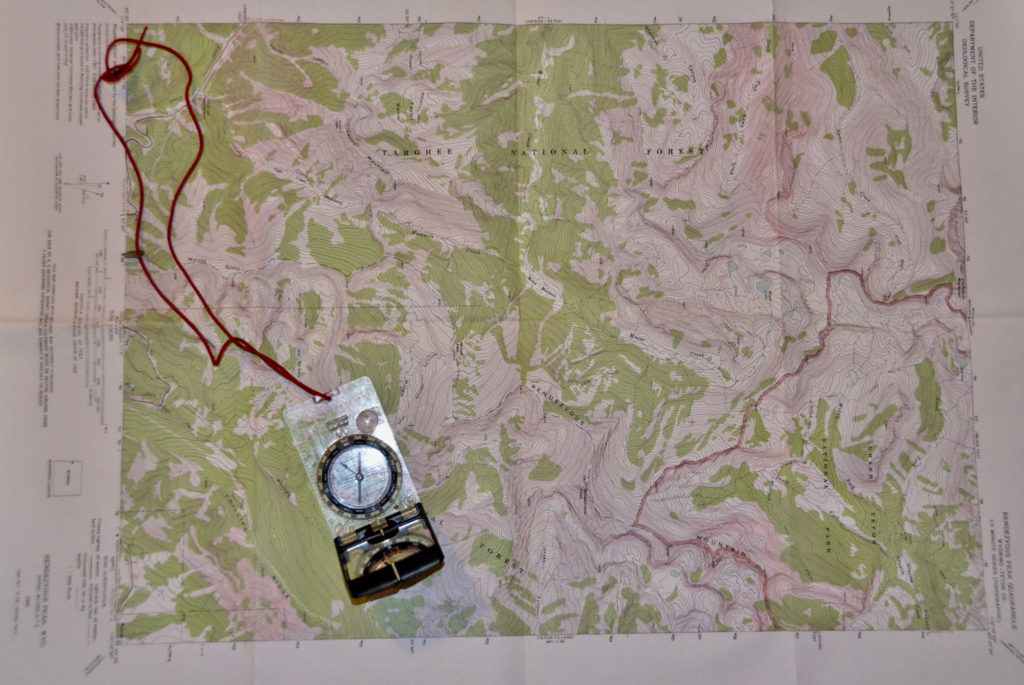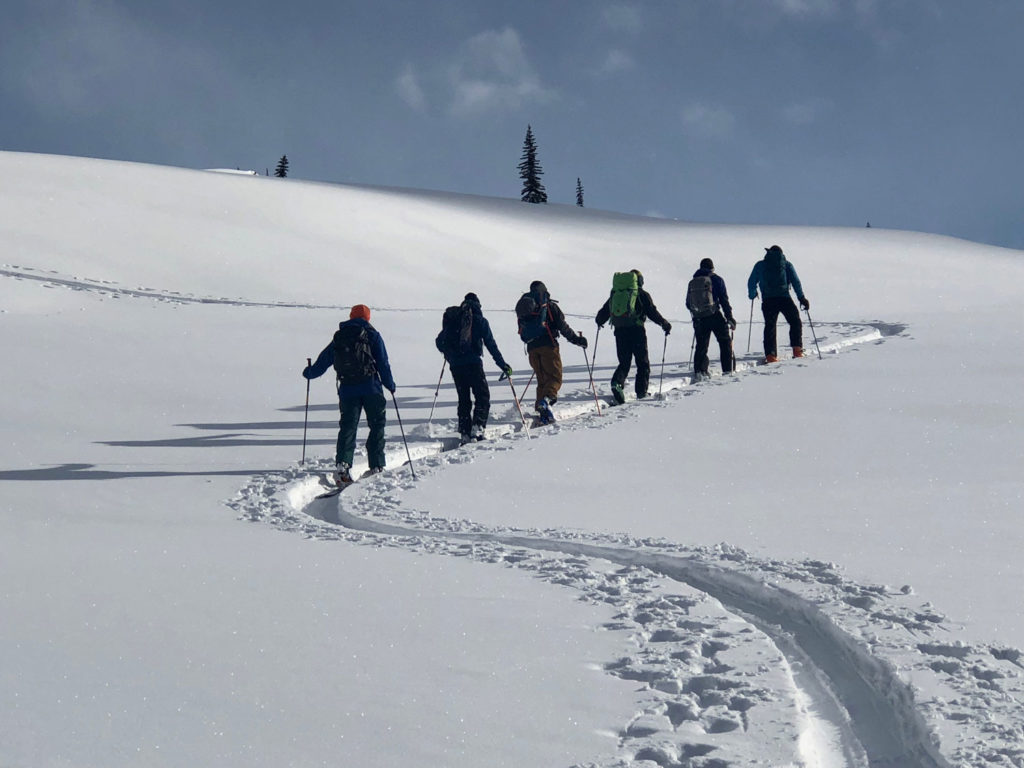Having the Flow Leads to a Smarter Go/No Go
Yes, I admit, I love a cheap rhyme. But the real point of my title is to illustrate how making our ski days flow smoothly allows us to make difficult decisions from an informed, relaxed, and situationally aware place. Finding your flow—and avoiding the rush and pressure that comes from heat-of-the-moment situations—starts with proper planning.
My flow begins sometime in the autumn when snow starts to stick to the ground in the alpine. If my work and recreation allow, I get out enough to watch the snowpack build. Obviously I can’t be everywhere, but through my own observations—watching weather forecasts, remote weather stations, and any other available sources such as the Public Avalanche Bulletins, the MIN and MCR in Canada—I start to form a picture of the snowpack. If I have an objective planned, I focus more on information sources for that region, using whatever resources are available to further refine it. If there are gaps in the data, I may simply have to embrace that uncertainty.
The answer to how to manage snowpack uncertainty was answered long ago with a simple expression: “If stability is the question, terrain is the answer.” This basic premise is still very applicable: Manage your uncertainties about the current avalanche hazard with your choice of terrain (read this article to learn more). I did a ski trip to Kyrgyzstan early last February, for example, and was unable to get any applicable snow or weather observations. We found the snowpack to be highly variable and generally shallow and weak, so we skied fairly simple, low-angle terrain and had a fabulous adventure. (It isn’t always all about the skiing.)

Once you have a general idea of the snowpack (or of your uncertainty about the snowpack), my flow then includes getting a visual picture of the terrain using my memory, word of mouth, photos, Google Earth, and maps. This picture includes as many of the terrain’s characteristics as possible. What is the approach like? Is it easy to find and follow? What are the hazards, landmarks, etc.? What is the proposed ski line like? I analyze the slope angles, distance, terrain traps, overhead features, aspects, elevation bands, and, perhaps most importantly, options.
Then the art becomes trying to overlay what I know about the snow onto what I know about the terrain, and then overlay what I don’t know. Somewhere during all of this, I will communicate this with the rest of the group, and the “I” becomes a “we.”
Throughout this process, we should question the validity of the objective given our current understanding of the conditions. At some point, this becomes the first “go/no go.” If we still have uncertainties but are willing to give the objective a try, we need to reconcile in advance that one safety measure could be simply turning around if the snow or terrain is not favorable. Turning around is always easier if it has been thoroughly discussed as an option beforehand.
Your group should have a clear plan for how your time will be used, and roughly how long each leg of the journey should take. Have a conversation the night before to let everyone state their current understanding of the snow, the terrain, and the plan. Let people voice their concerns and their stoke (planning is supposed to be part of the fun). A strong premise is that the most conservative vote wins. It is fair to try to assuage people’s fears with facts, but completely unfair to override them. This is one of the strengths of group decisions and should never be overlooked. You can always come back another day if you live to come back another day.
Now to the flow of the day itself. Try your best to ensure everyone has their shit together. Have a breakfast or tailgate meeting to update your hazard forecast and reconsider your terrain choices and concerns. Commit to a time by which your packs and skins are on, beacons are checked, and you are ready to walk. Nothing disrupts the flow quite like three people waiting for one person to cram breakfast in his mouth with one wet sock on while looking for transceiver batteries.

A good group sets itself up for success by travelling at a pace everyone can maintain all day. They stay together, stop at key decision and view points, and stop once an hour or so for a quick sip, nibble, and check-in. Snow conditions, terrain, and options are discussed as often as makes sense, and everyone should be able to input and express concerns. Concerns include unanticipated snow conditions or terrain features; dramatic changes in forecasted weather; the activities of other groups; or how each person is feeling mentally or physically. Any of these things could precipitate making the call to turn around or opt for Plan B. No decision should come as a surprise to anyone.
If the trip does have a key/crux decision point, it has ideally been approached by everyone in the group with their eyes and minds wide open. If the group decides to carry on and ski the Plan A objective, the decision is made by the group because they all agree that the conditions they had planned and hoped for are present. Appropriate safety measures are applied as a good habit and another layer of safety.
When the trip is winding down as either a finished project or as a successful retreat, it is wise and often satisfying to debrief the day. Was everyone happy with the process? What could we have done better? Where did everyone feel most at risk or most uncertain? There is an art to debriefs, and if all goes well, most people will have nothing much to add. When someone does have something to say, that’s where the learning opportunity is.
Now, take what you learned about the snow, the terrain, the plan, the skiing up and down, yourself, and your group that day, and let it flow into the bucket of experience you can both learn from and enjoy looking back on.
Go work on your flow, so when you go to the snow you can show you know when to go or no go. (Bonus points if you have someone who knows how to beat-box.)
Larry Stanier has worked in the avalanche patch since the early 1980’s as a Blackcomb ski patroller, avalanche consultant, CAA and ACMG instructor, and with Kananaskis Country Public Safety but primarily as an IFMGA/ACMG Mountain Guide. He has guided and played extensively in Alberta and British Columbia but also in the Yukon, Baffin Island, Alaska, Japan, Patagonia, Antarctica, Iceland, Greenland, Svalbard, New Zealand, Georgia, Kyrgyzstan, India, Nepal, Scotland and the European Alps. He can’t decide whether his first love is skiing or climbing but he works on answering that question year around.


